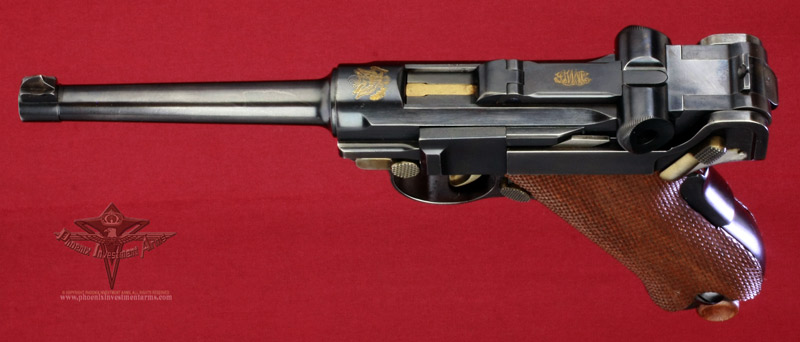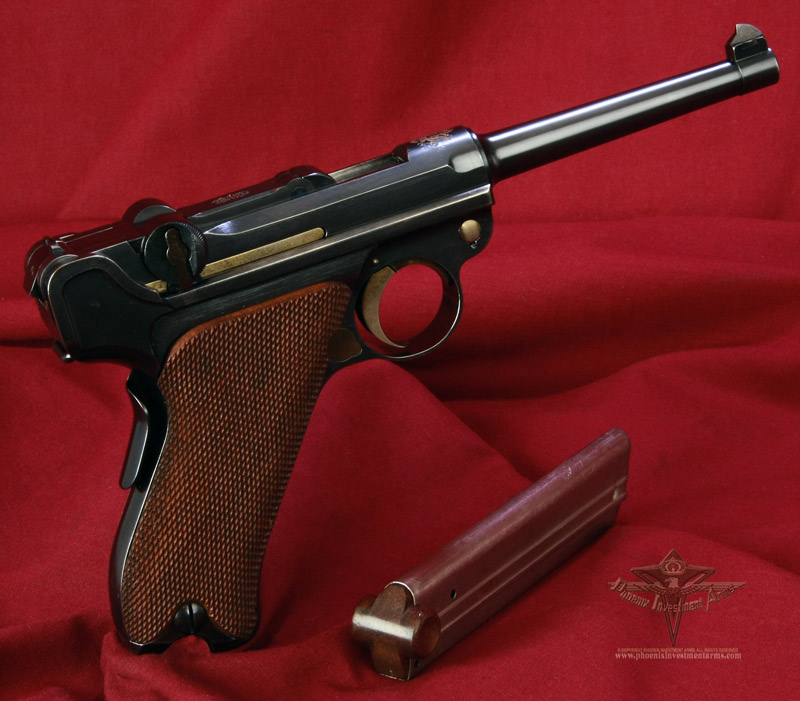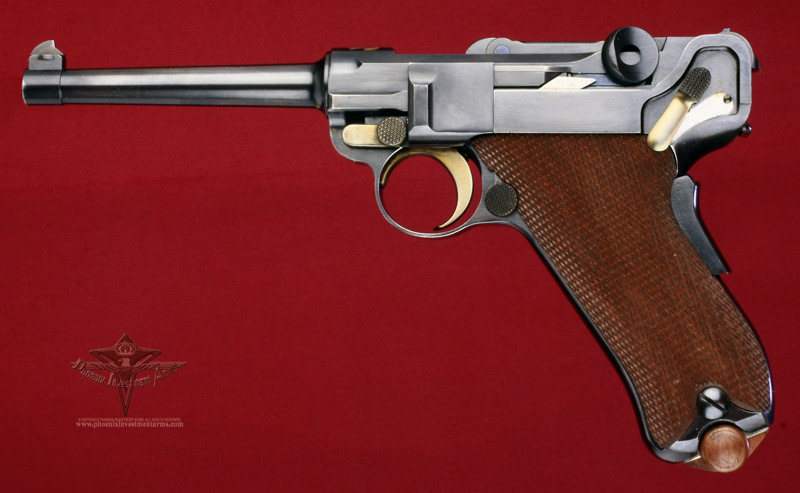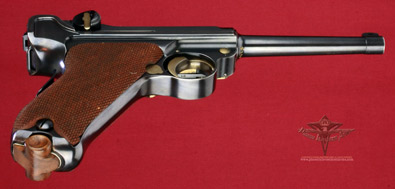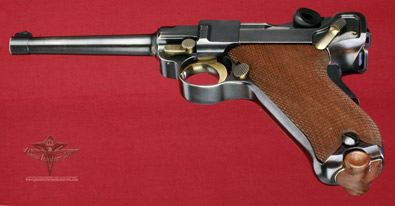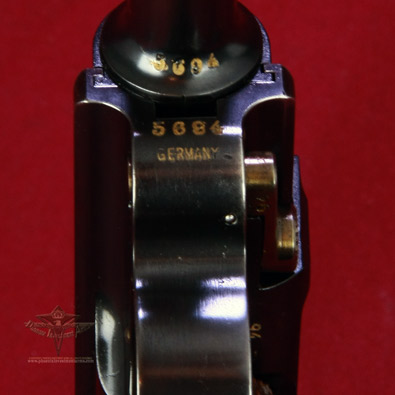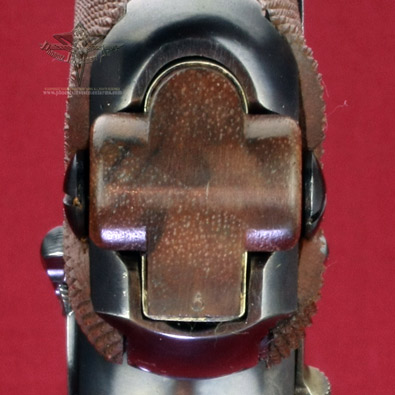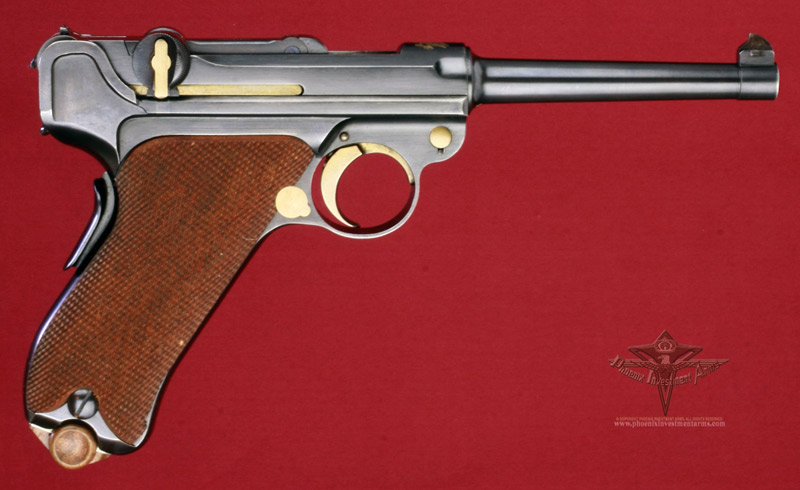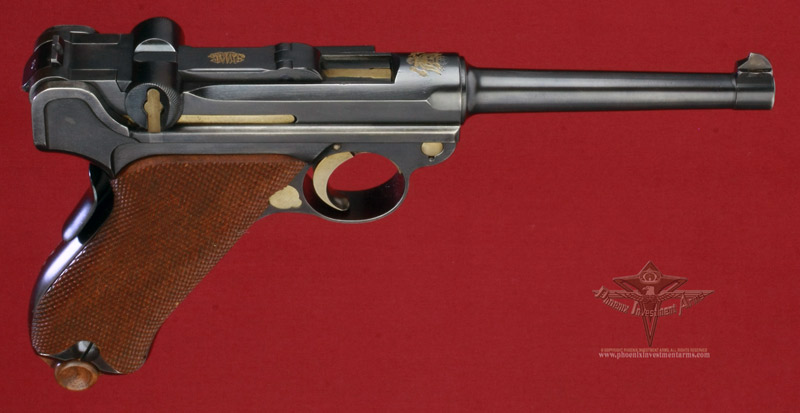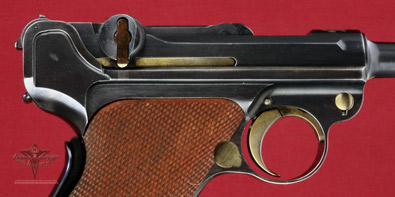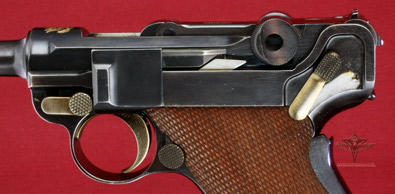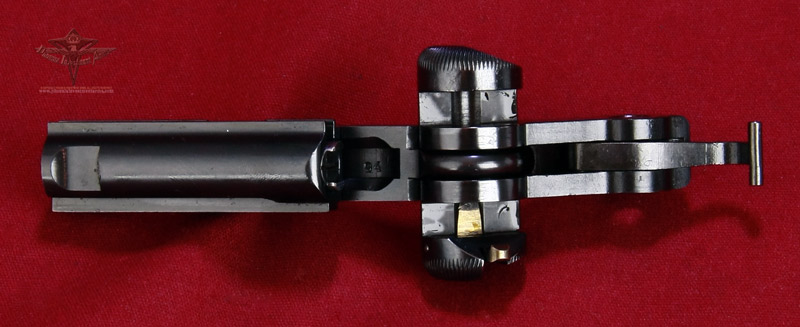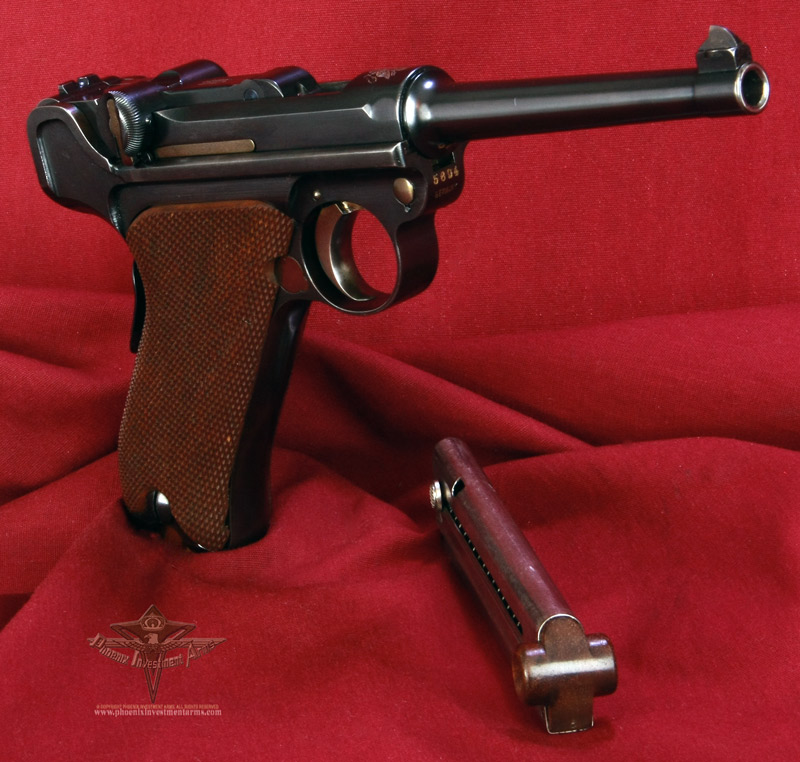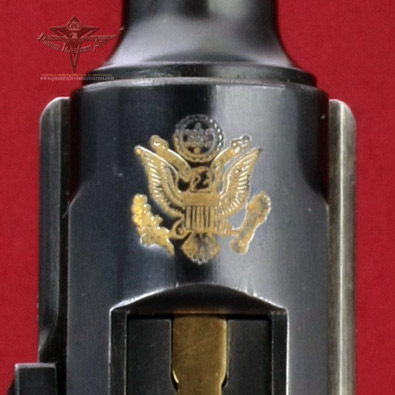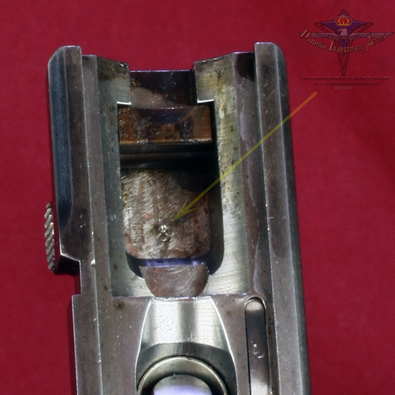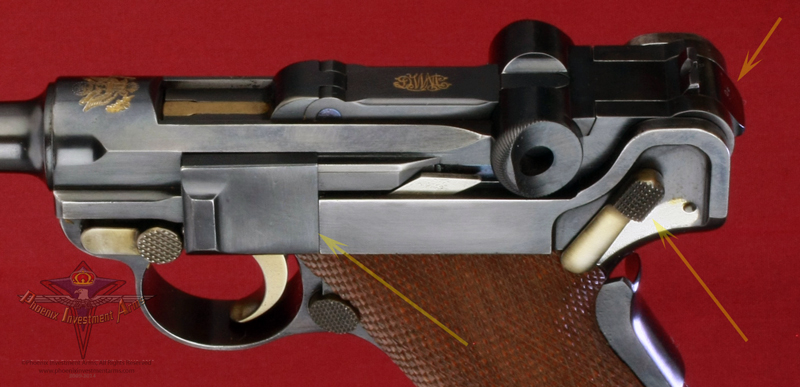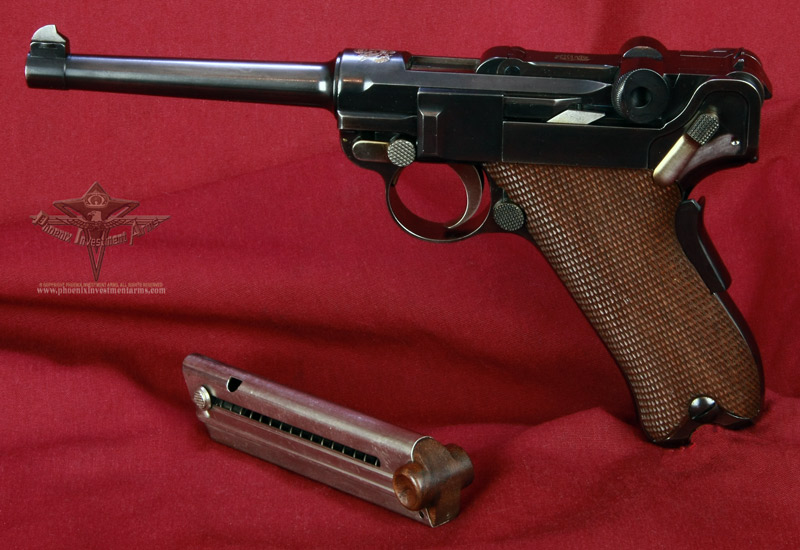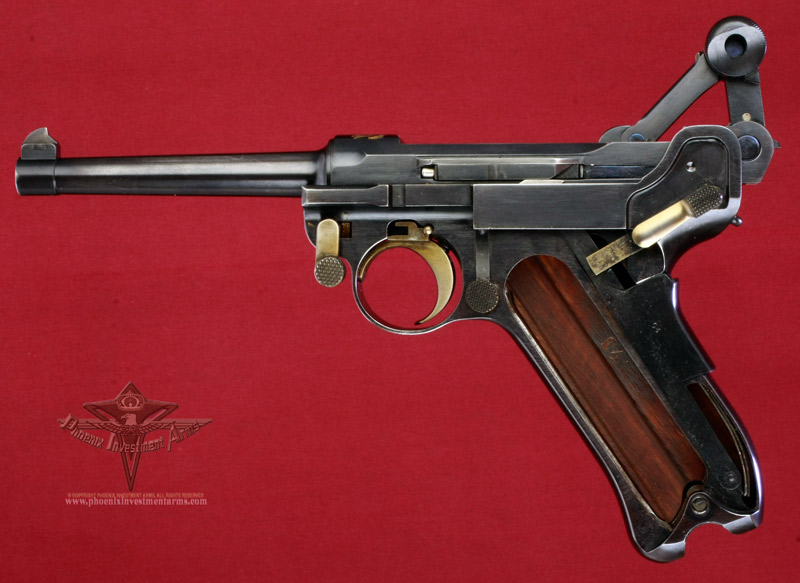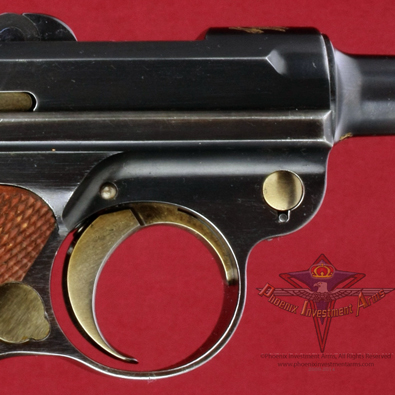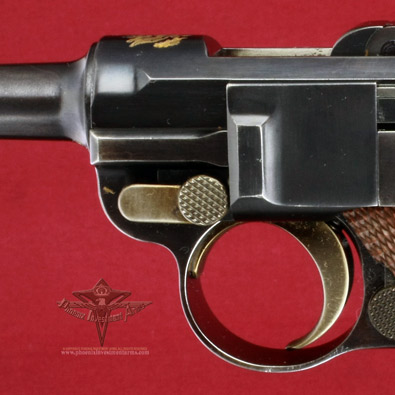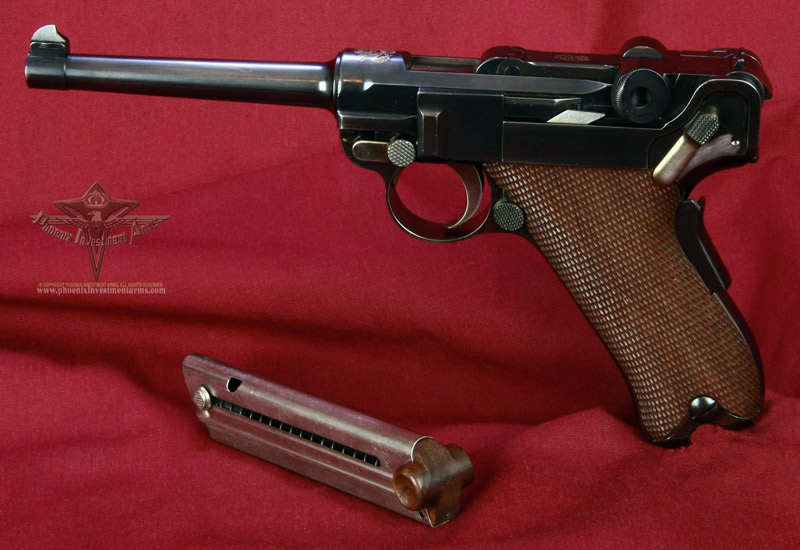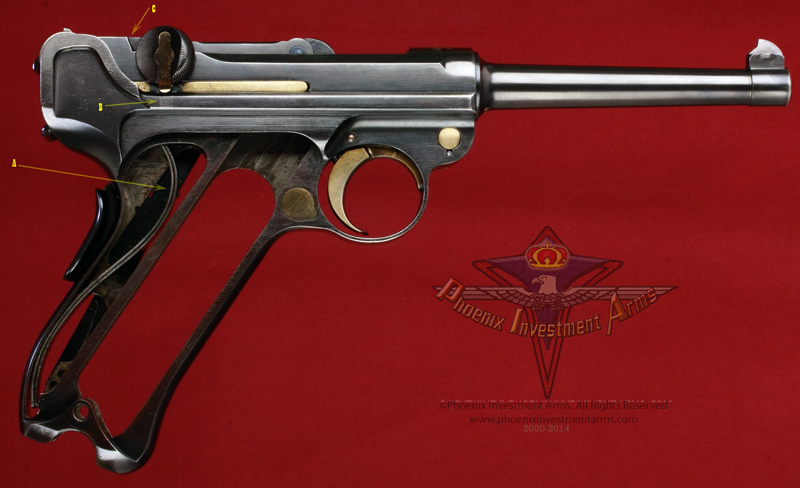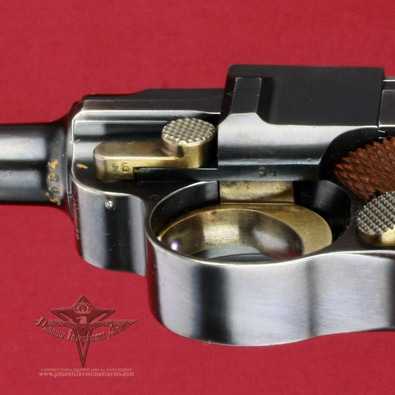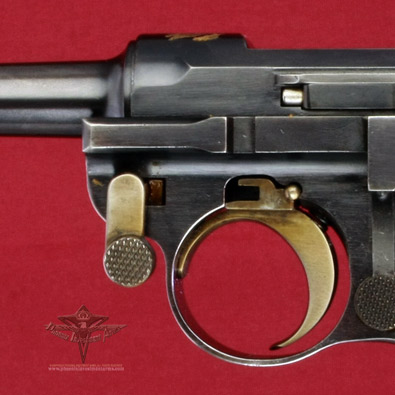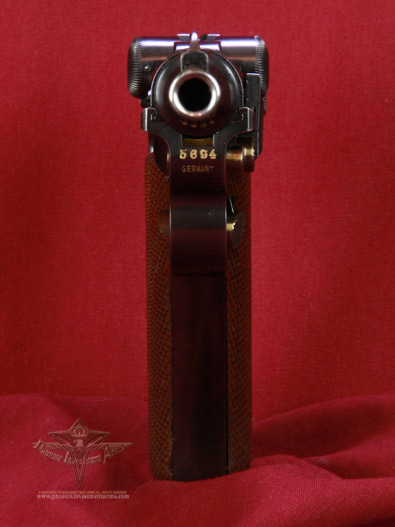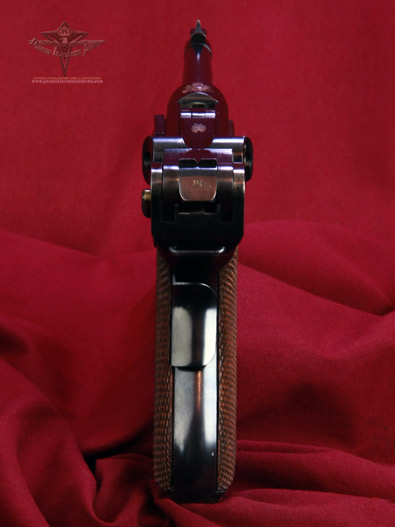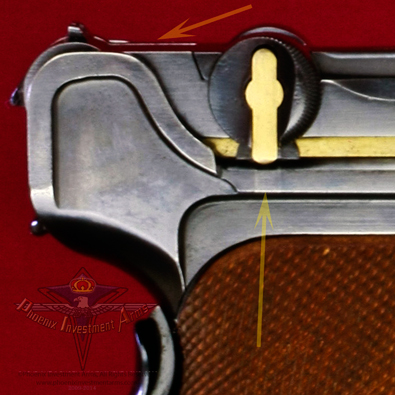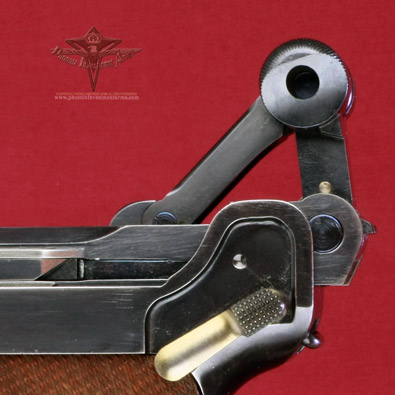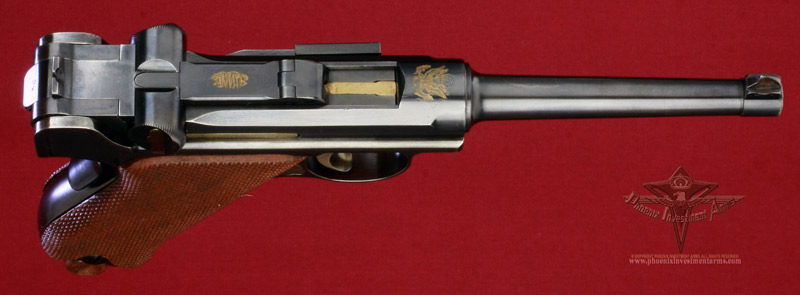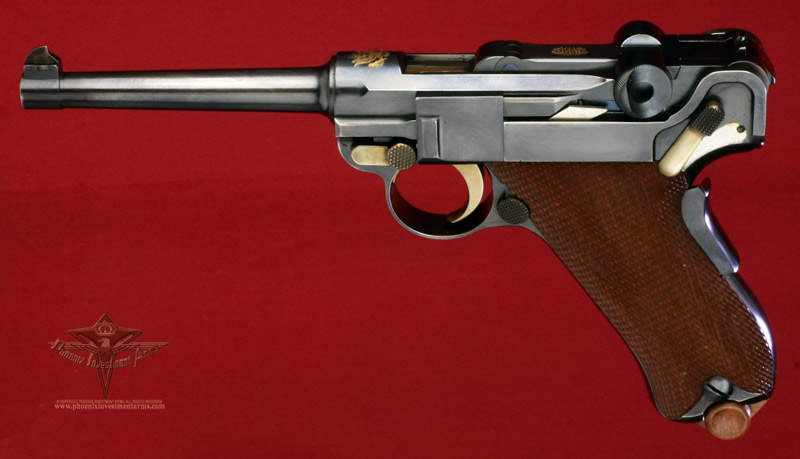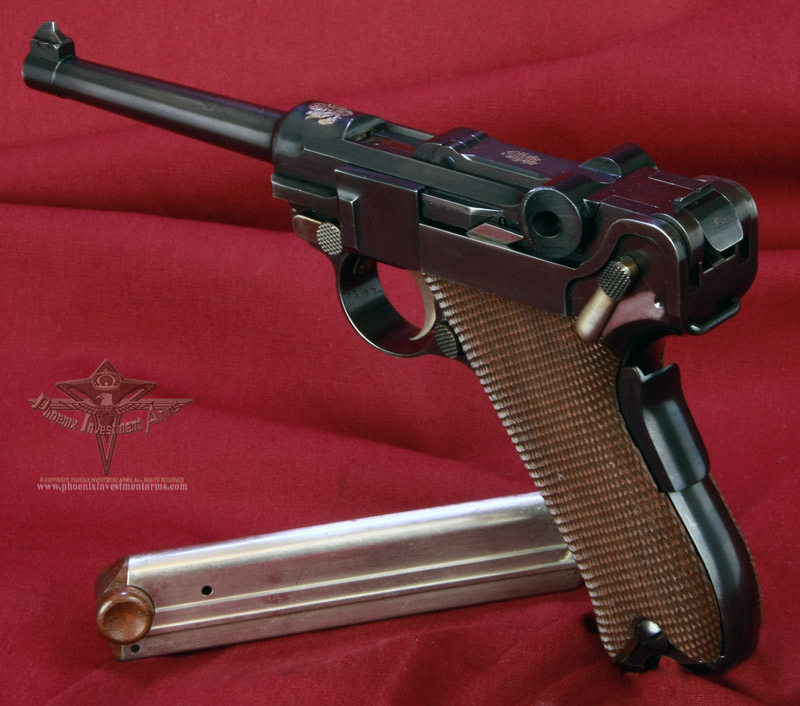|
|
|
This is a 1900 Model, 7.65mm (.30 Cal Luger), the "old model" transitional frame with a Type II thumb safety and is not marked but is polished with the extractor the old style leaf type. The Luger has a serial numbered grip squeeze safety. There is an "American Eagle" from the US Great Seal over the Chamber and the DWM (Deutsche Waffen-und Munitionsfabriken AG) on the first toggle link. The four digit serial number falls before the range of the US Military Test Guns from the trials conducted in 1901 (1528) |
|
|
|
One of the things "known" about Lugers is that international law required guns made for commercial sales must show the country of origin. Usually this was done on the early Lugers by placing "Germany" on the front of the frame under the serial number. This gun exhibits this 'commercial' designation having the "German" import mark required by customs for any weapon entering the US. This is one of the classic Lugers exported by DWM to the United States as a pre-test model. |
|
As the sales of the 1900 began to take a hold and bolstered by the orders of the Swiss the DWM salesman began to capitalize on their success with the National symbols on the head space and produce salesman's samples for the world market. The Serbian, King Carolos I, the 1900 Bulgarian and Russian in addition to the South American nations were presented with samples of the 1900 Luger for testing and trials. This particular Luger with the early Type II thumb safety and very early DWM proof marks was brought to the United States before the test trial guns, more than likely as a demonstration piece to show the US Army. |
